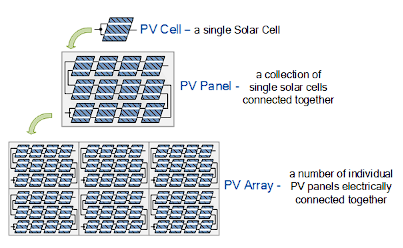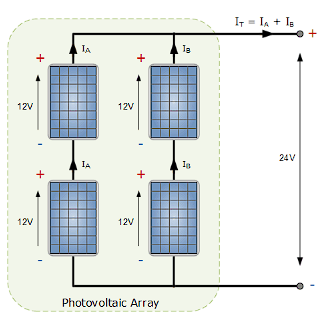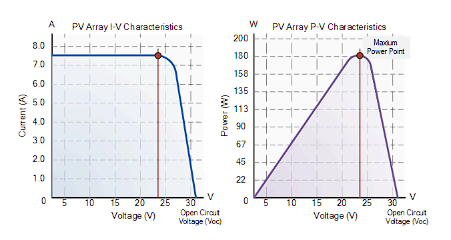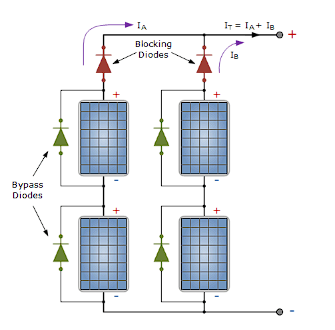What Is Solar Power?
1210Delve into the principles of solar power with YORO, exploring its potential, applications, and the innovations making it a sustainable energy alternative
View detailsSearch the whole station
A Solar Photovoltaic Array, often referred to as a Solar Array, is a cohesive system comprised of multiple solar panels, each made up of individual photovoltaic cells connected together. It represents a larger-scale PV installation, where multiple solar panels are electrically wired together to form an array. Generally, the larger the total surface area of the array, the higher the solar electricity production.
A photovoltaic array is pivotal in creating a substantial PV system, serving as the principal source for generating electrical power supply. Given that a single photovoltaic panel or module typically produces an insufficient amount of solar power for general use, the integration of multiple panels is crucial.
Most manufacturers develop standard photovoltaic panels designed to deliver an output voltage of 12V or 24V. To achieve the desired power output, numerous PV panels are connected in series to meet higher voltage requirements and in parallel to satisfy higher current needs.
The Solar Photovoltaic Array is integral in harnessing solar energy efficiently, allowing for the optimization of solar electricity production based on the array’s total surface area. By strategically connecting multiple panels, it is possible to meet diverse power needs and promote sustainable energy solutions.

Photovoltaic cells and panels play a pivotal role in transforming solar energy into direct-current (DC) electricity. The configuration of solar panels within a singular photovoltaic array mirrors the connection of PV cells within a single panel.
Panels within an array can be interconnected in series, parallel, or a combination thereof, with series connections predominantly chosen to amplify output voltage. For instance, interconnecting two solar panels in series doubles the voltage while maintaining consistent current.
The size of a photovoltaic array is versatile, ranging from a few interconnected PV modules in urban settings to hundreds of panels combined in fields to power entire communities. This modular flexibility enables the design of solar power systems to meet diverse electrical needs, irrespective of scale.
It’s crucial to avoid mixing photovoltaic panels from different manufacturers within a single array, even if their specifications seem similar, to prevent mismatch losses and ensure optimal efficiency due to variations in solar cell I-V characteristic curves and spectral response.
The electrical attributes of a photovoltaic array are depicted in the relationship between output current and voltage, influenced by solar insolation and the operating temperature of the solar cells. Manufacturers provide Photovoltaic panel (I-V) curves to summarize this relationship, detailing parameters like open-circuit voltage (VOC), short-circuit current (ISC), maximum power point (Pmax), fill factor (FF), and percent efficiency (% eff).
The efficiency of a photovoltaic array, typically around 10-12%, is the ratio of the maximum electrical power produced to the amount of solar irradiance received. The fill factor, indicative of the array’s quality, is closer to unity for higher power provision, with typical values ranging between 0.7 and 0.8.
Photovoltaic I-V characteristic curves are essential for designers to configure systems operating close to the maximum peak power point, considering the solar radiation equivalent to 1000 W/m^2.
Understanding the intricate details of photovoltaic arrays, from connection dynamics to electrical characteristics, is crucial for optimizing solar energy harnessing, ensuring consistent, efficient, and scalable solar power solutions.

The depicted photovoltaic array consists of four distinct photovoltaic modules, forming two parallel branches. Within each branch, two PV panels are electrically interconnected, creating a series circuit. Consequently, the array’s output voltage equals the series connection of the PV panels. In this instance, the calculated output voltage, ����Vout, is 24 Volts, derived from the summation of two 12V panels.
Assuming each PV panel yields 3.75 amperes under full sun, the total current, ��IT, is 7.5 Amperes. Thus, the maximum power, ����Pout, of the photovoltaic array under optimal sunlight is 180W, calculated using the formula ����=�×�=24×7.5Pout=V×I=24×7.5.
Each PV panel or module can reach a maximum power output of 45 watts (12V x 3.75A) under full sun, allowing the PV array to attain its peak of 180 watts. However, actual maximum output power typically falls below the calculated 180 watts due to variations in solar radiation, temperature effects, and electrical losses.
This analysis provides a succinct overview of the photovoltaic array characteristics, offering insights into the interplay between voltage, current, and power output in photovoltaic systems, and highlighting the discrepancies between theoretical and actual power outputs due to environmental and operational factors.

Photovoltaic cells and diodes are integral components of semiconductor devices, both constructed from a fusion of P-type and N-type silicon materials. While photovoltaic cells generate voltage when illuminated, PN-junction diodes serve as solid-state valves, permitting electrical current to flow in one direction only.
Diodes are pivotal in obstructing the electric current flow from various segments of a solar circuit. Within a photovoltaic solar array, such silicon diodes are predominantly termed as Blocking Diodes.
In our preceding discussion on photovoltaic panels, we explored the utilization of “bypass diodes,” which are paralleled with one or multiple photovoltaic solar cells. These diodes prevent well-exposed PV cells from overheating and damaging weak or partially shaded cells by offering an alternative current path around the defective cell. It’s crucial to note that the application of blocking diodes differs from bypass diodes.
Bypass diodes are typically paralleled with a PV cell or panel to divert the current around it, while blocking diodes are series-connected with the PV panels to avert current from flowing back into them. Although the physical diode remains consistent in most scenarios, the installation and purpose significantly differ between blocking and bypass diodes.
Refer to the illustrated photovoltaic solar array below to comprehend the distinct applications of these diodes in enhancing the efficiency and longevity of solar arrays.

Diodes, as previously mentioned, are pivotal components that facilitate unidirectional current flow. In photovoltaic arrays, green-colored bypass diodes are typically parallel-connected with each PV panel, offering a low-resistance path around the panel. Conversely, the red-colored diodes, termed “blocking diodes,” are series-connected with each branch, ensuring that the electrical current exclusively flows OUT of the series array to the external load, controller, or batteries.
The incorporation of blocking diodes is crucial to prevent the backflow of current generated by parallel-connected PV panels within the same array through a weaker (shaded) network. Additionally, they inhibit the discharge or drainage of fully charged batteries through the PV array at night. When multiple PV panels are parallel-connected, the inclusion of blocking diodes in each branch is essential.
Blocking diodes are integral in PV arrays with two or more parallel branches or when partial shading of the array is probable during the day. The selection of diode type and size is contingent upon the photovoltaic array specifications. The available diode types for solar power arrays include the PN-junction silicon diode and the Schottky barrier diode, each offering a range of current ratings.
The Schottky barrier diode, with its lower forward voltage drop of about 0.4 volts, compared to the PN diode’s 0.7-volt drop, enhances the array’s efficiency by reducing power dissipation in the blocking diode. Many manufacturers integrate blocking diodes within their PV modules, streamlining the design process.
The design of a photovoltaic array is governed by solar radiation levels and daily energy demands. The array must be meticulously sized to meet load demands and mitigate system losses. Shading significantly impacts the system’s output, necessitating the use of bypass diodes to offer alternative current paths and prevent power dissipation in shaded PV panels.
In fully series-connected systems, blocking diodes are not mandatory but are recommended to prevent reverse current flow from batteries back to the array during low solar irradiance or nighttime. The design must also account for climatic conditions, temperature variations, and wind loading, especially in mountain top installations.
In the subsequent tutorial on “Solar Power,” we will delve into the utilization of semiconductor photovoltaic arrays and solar panels in Stand Alone PV Systems for off-grid applications.

Delve into the principles of solar power with YORO, exploring its potential, applications, and the innovations making it a sustainable energy alternative
View detailsExplore how to select the optimal junction box for solar modules, focusing on connection, protection, weather resistance, and more, with YORO
View detailsSolar Junction Box: The Heart of Solar PanelsKey Features and BenefitsPV Junction Box: Ensuring Safe and Efficient Power TransferAdvanced Technology for Maximum EfficiencySolar Array Junction Box: Integrating Multiple PanelsEnhancing System Reliab...
View detailsMaster the installation of solar junction boxes with YORO, ensuring secure, optimal connections and functionality of solar panels
View details